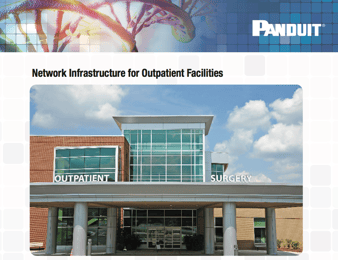In today’s healthcare environment, everything from electronic medical records, nurse and patient communication, and even treatment plans rely on your wireless network. Imagine wireless communication like a brain synapse carrying data across a space between two devices (neurons). Wireless networks have become a necessity to support medical technology and are being stretched to maximum capacity by applications such as bring your own device (BYOD) for on-the-go access to patient records, wearable health monitors, and wireless imaging which helps to eliminate tripping hazards.
These new mobile applications mean that an average worker can have three or more devices (e.g., cellular phone, ç
laptop, tablet) at any given time, combined with patient wearable monitors and medical devices and machinery all  competing for access to the wireless network. In order to provide reliable and fast wireless data transfer – and in turn, quality patient care – the structured cabling that sits behind the access points must be robust. In smaller outpatient facilities, staff still relies on the technology inside those buildings. Networks must support bandwidth intensive applications and advanced audio/visual systems used for telemedicine, as well as accessing patient records stored offsite- an ever-increasing amount of data to store and receive.
competing for access to the wireless network. In order to provide reliable and fast wireless data transfer – and in turn, quality patient care – the structured cabling that sits behind the access points must be robust. In smaller outpatient facilities, staff still relies on the technology inside those buildings. Networks must support bandwidth intensive applications and advanced audio/visual systems used for telemedicine, as well as accessing patient records stored offsite- an ever-increasing amount of data to store and receive.
Panduit recommends installing Category 6A cabling to wireless access points (WAPs) to provide the necessary bandwidth and superior heat dissipation when using Power over Ethernet (PoE) to power the WAPs. The Panduit Category 6A cabling system utilizes MaTriX technology to improve heat dissipation beyond the industry norm. Panduit’s solutions for outpatient facility include not just Category 6A cabling- Panduit also offers unique structured cabling designs offer a reduced footprint while providing the quality and performance you require.
For more information on infrastructure design and applications for outpatient facilities
Download the quick reference guide here
Click here to learn more about Accu-Tech



.png?width=58&height=58&name=X_logo_2023_(white).png)
